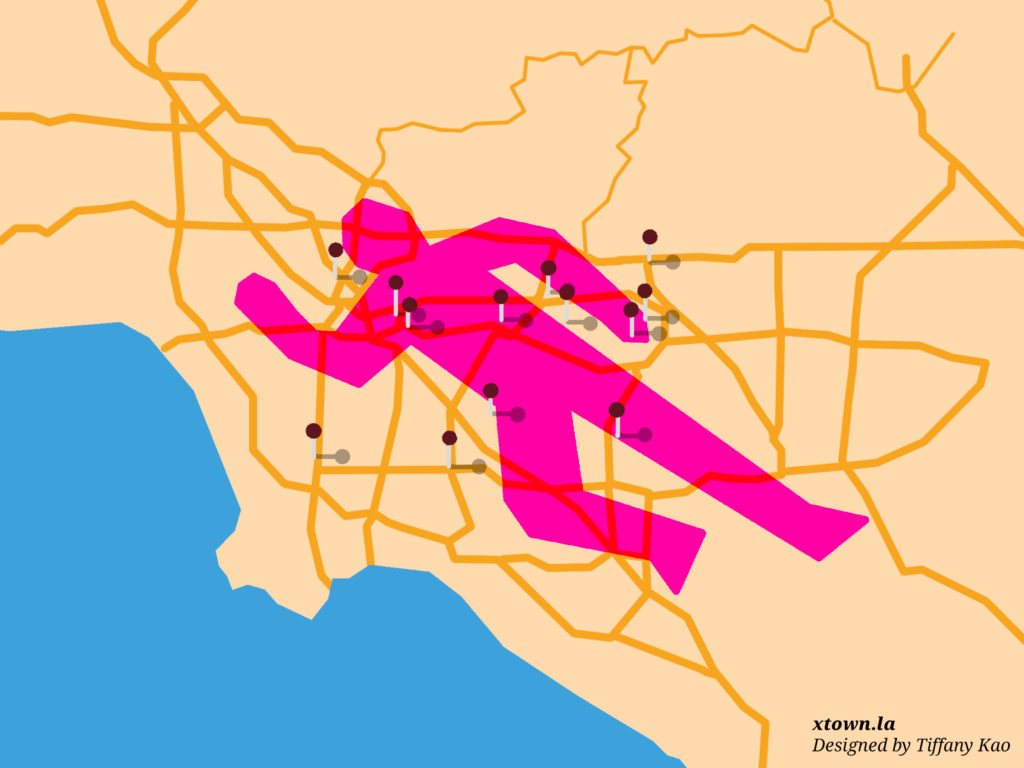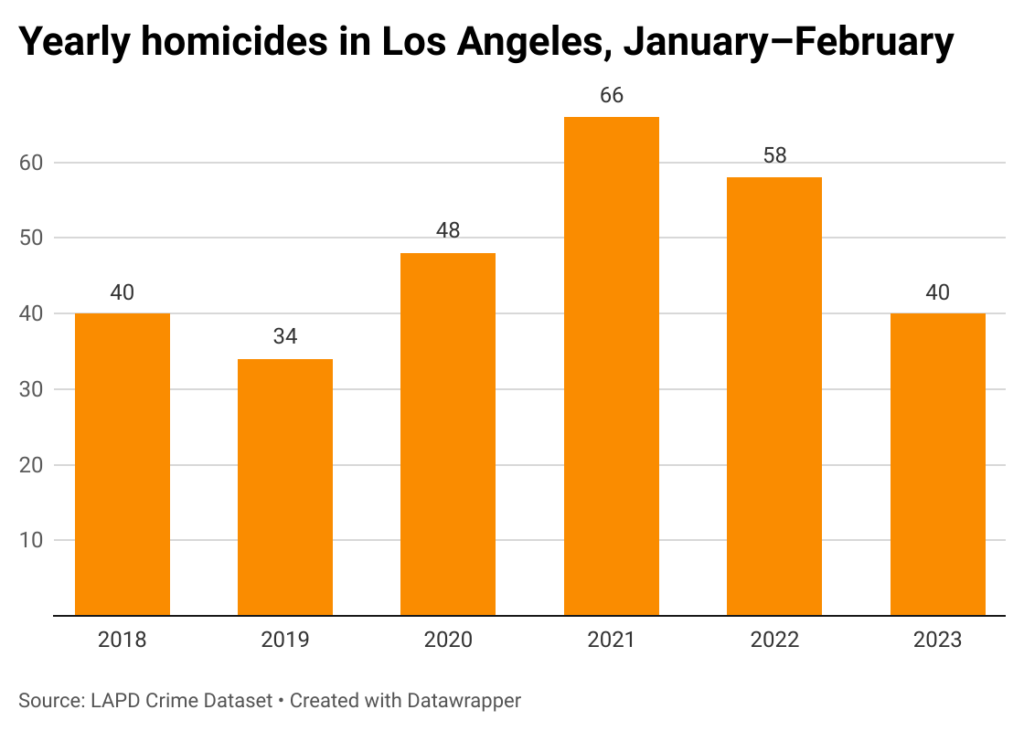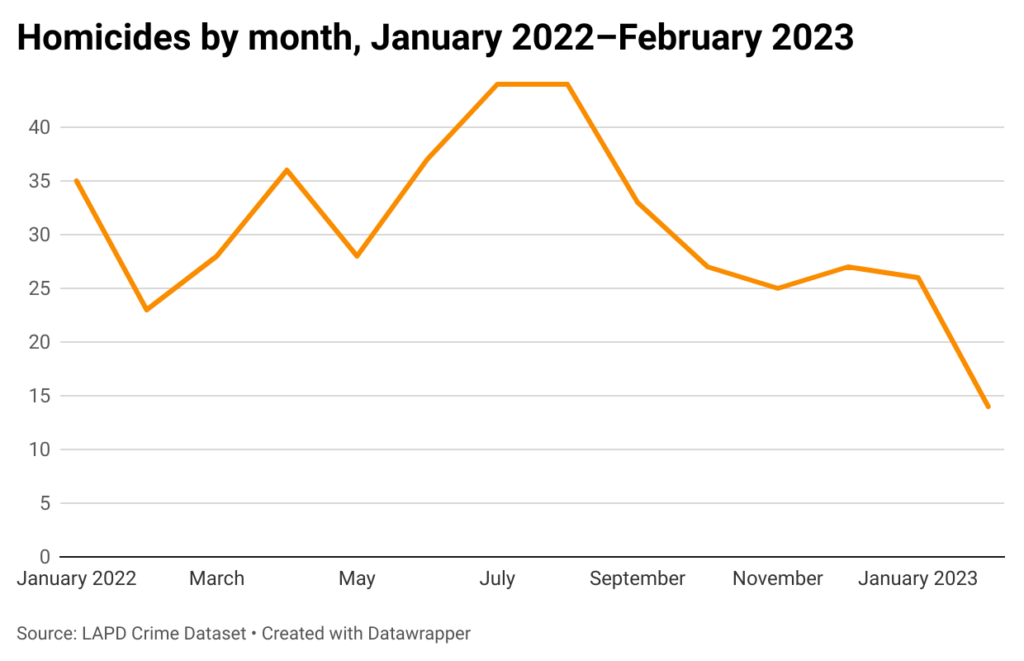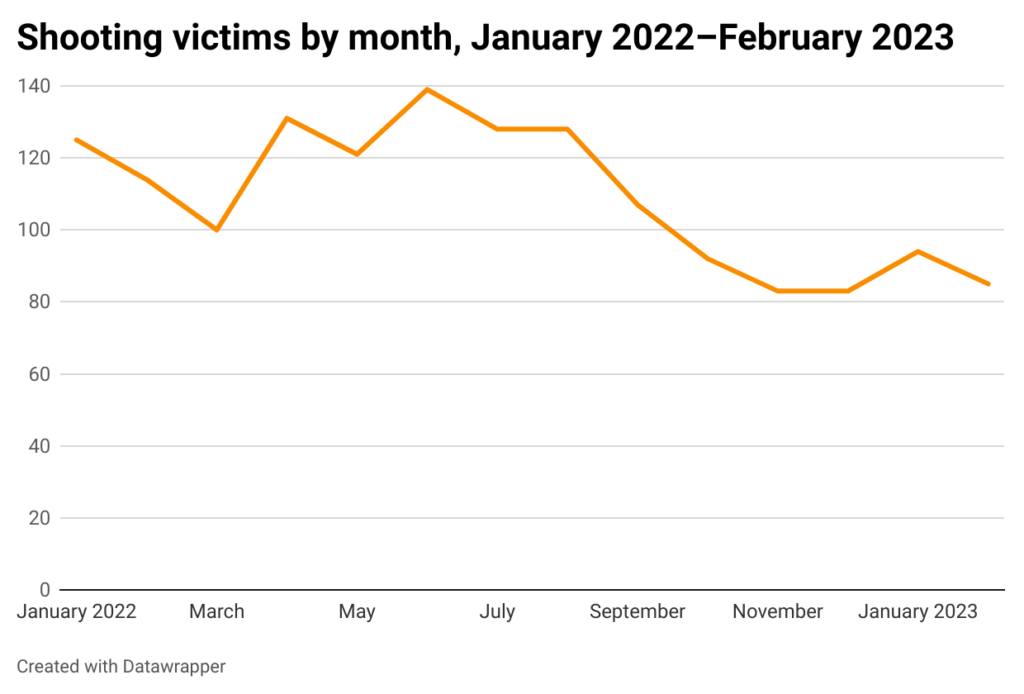Murders and gun violence fall in first two months of 2023

In the months and then years after the pandemic began, many cities across the country experienced a surge in violent crime. That included Los Angeles. In 2021 there were 397 murders in the city, the highest annual count in 14 years. In 2022 there were 382 homicides.
Two months into 2023, the situation is changing. Murders are down, and so is overall gun crime.
“We continue to see an improvement in our violent crime numbers, specifically in our shooting violence,” Police Chief Michel Moore told the Los Angeles Police Commission at its Feb. 28 meeting.
[Get COVID-19, crime and other stats about where you live with the Crosstown Neighborhood Newsletter]
Through the end of February, the Los Angeles Police Department recorded 40 murders. That is down 31% from the 58 homicide victims in the same period in 2022.
It is a 39.4% decline from the 66 homicides in the equivalent timeframe in 2021.

Approximately 72% of the murders so far this year involved a gun, similar to the breakdown in each of the last two years.
However, overall gun violence has fallen sharply in the city.

The number of shooting victims began notably declining last September, and the trend has continued into 2023. In February 85 people in the city were struck by gunfire.
This makes five consecutive months with fewer than 100 shooting victims, according to publicly available Los Angeles Police Department data. The last five-month period at this level was January-May 2020.

No shortage of tragedy
Although the number of murders has fallen this year, there has been no shortage of tragedy in the region. There was a triple homicide on the morning of Jan. 28, with three young women killed in the Beverly Crest neighborhood.
Last month, the city was shaken by shootings on consecutive mornings of Jewish men as they walked home from temple in Pico-Robertson. Jaime Tran, 28, was arrested on the afternoon of Feb. 16. Authorities have identified a history of antisemitic activity, and he faces federal hate crime charges.
Then there was the horrific mass shooting during Lunar New Year festivities on Jan. 21, when 11 people were killed in a dance studio. That was in Monterey Park, outside of city limits, but still within Los Angeles County.
Although overall homicides are falling in the city, the place where the most murders happen has not changed. Downtown registered nine killings in the first two months of 2023. The second highest toll was in Westlake, where four people were killed.
Los Angeles is not alone in seeing a decline in gun violence in the new year. However, the 31% year-over-year drop in homicides exceeds what has occurred in some other major metropolitan areas.
From Jan. 1–Feb. 19, there were 49 murders in New York City, according to Compstat data from the New York Police Department. That is a 12.5% drop from the 56 homicides in the same period in 2022.
In Chicago, there were 73 killings between Jan. 1 and Feb. 26, according to Chicago Police Department Compstat data. That represents an 18% decrease from the 89 murders in that timeframe in 2022.
The improvements in the crime picture in Los Angeles this year extend beyond gun violence. According to LAPD Compstat data, overall violent crime from Jan. 1–Feb. 25 is down 10.9% from the same period last year.
There were 14,926 property crimes—a category including car break-ins, burglaries and vehicle thefts—in the city from Jan. 1–Feb. 25. That is a 4.1% decline from the same period the year before.
How we did it: We examined publicly available crime data from the Los Angeles Police Department from Jan. 1, 2010–Feb. 28, 2023, as well as LAPD Compstat data. Learn more about our data here.
LAPD data only reflects crimes that are reported to the department, not how many crimes actually occurred. In making our calculations, we rely on the data the LAPD makes publicly available. LAPD may update past crime reports with new information, or recategorize past reports. Those revised reports do not always automatically become part of the public database.
Have questions about our data or want to know more? Write to us at askus@xtown.la.






